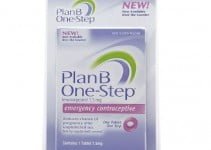Mahi-mahi is a Hawaiian name for one of the commonly consumed fish in the US and Caribbean region. In Spanish, it is called dorado. It is sometimes also called dolphinfish; however, it is worth knowing that it has nothing to do with dolphins. It is a fish and not a mammal.
Fish is generally regarded as one of the best foods for health. Thus, its regular consumption is also recommended in pregnancy. Fish is an excellent source of lean proteins. They are rich in high-quality protein containing all the essential amino acids.
 Fish is also a good source of essential fatty acids or healthy fats. For example, omega-3 fatty acids like DHA could be especially good for brain health. Further, fish generally contains both water and fat-soluble vitamins.
Fish is also a good source of essential fatty acids or healthy fats. For example, omega-3 fatty acids like DHA could be especially good for brain health. Further, fish generally contains both water and fat-soluble vitamins.
Fish is also low in carbs. It means that it does not cause insulin resistance. It is easy to cook, does not require much time to cook. It tastes good even without any spices, condiments, or sauces.
So why the question regarding its suitability in pregnancy?
The reason is not in a fish, rather in industrialization and water pollution. In recent years, mercury pollution of oceans has become a significant cause of concern. This mercury is in waste products of various industries. Mercury is neurotoxic. Therefore, a need to limit the intake of seafood during pregnancy.
However, every fish species differs biologically and in its preference for habitat. It means that mercury may accumulate much in some fishes and less in others.
Mahi-mahi fish biology and habitat
It is a common fish in tropical and subtropical regions. It is found in abundance in the West coast and pacific islands regions.
The US’s National Oceanic and Atmospheric Administration (NOAA) states that consuming wild-caught Mahi-mahi is a smart food choice. It is a highly sustainable fish that is not endangered in any way. In addition, it appears that the population of the fish is quite stable [1].
Further, fishing methods used to catch these fish are pretty safe and do not cause damage to the ocean floor.
The fish grows fast and may reach up to 7 feet or 88 pounds. It may live a maximum of up to 5 years. It produces lots of eggs and is ready to reproduce at the age of 4 to 5 months. All these factors explain why consuming it is a smart choice.
Why consuming Mahi-mahi could be right in pregnancy?

It is good to consume a portion or two of a fish in a week while pregnant. A growing fetus requires that pregnant women should be consuming nutrition-rich food. It appears that fish is one of the most beneficial foods for health.
The good thing about Mahi-mahi is that it is rich in proteins, has only small amounts of fats, and is rich in minerals and vitamins. In addition, it is almost free of carbs. Thus, it could even be suitable for those diagnosed with gestational diabetes.
A 3 oz or 85 grams of Mahi-mahi contains about 16 g protein, 0.6 g fats, 0 carbs, a small amount of iron and potassium, and moderate amounts of omega-3 fatty acids. It also contains moderate amounts of vitamins of group B like niacin, pantothenic acid, cobalamin. However, it does not have much folate [2,3].
Nonetheless, it has an excellent nutritional profile. Thus, it is suitable for growing fetuses providing high-quality proteins, vital vitamins, including cobalamin (B12). In addition, since it contains moderate amounts of omega-3 fatty acids, it may also be suitable for fetal neurodevelopment.
What are the health risks posed by Mahi-mahi?
Everything is good in moderation, and the same is true for Mahi-mahi. In fact, if not for the concerns regarding its content of mercury, it would have been an excellent food for daily consumption. Unfortunately, however, it still contains mercury in traces.
It is worth knowing that mercury in oceans is not just due to pollution or industrial waste. Mercury is also naturally present in oceans. It may be especially in abundance in areas with high volcanic activity. Additionally, it is also present in some rocks.
It may not cause any severe effect in traces but causes toxicity in higher dosages. It is thought that a growing fetus is susceptible to the toxic effects of mercury. It is because of the fast-developing nervous system. Thus, there is a need to limit the intake of Mahi-mahi.
What do the guidelines say?
 There are numerous guidelines regarding the consumption of fish in pregnancy. For example, the US FDA statements say that those planning to get pregnant or pregnant women or breastfeeding mothers should consume 8 to 12 ounces of a variety of fish per week. However, they should only consume fish known to be low in mercury [4].
There are numerous guidelines regarding the consumption of fish in pregnancy. For example, the US FDA statements say that those planning to get pregnant or pregnant women or breastfeeding mothers should consume 8 to 12 ounces of a variety of fish per week. However, they should only consume fish known to be low in mercury [4].
Fortunately, to make things easier for pregnant women, Mahi-mahi is among the well-studied fishes. It is not entirely free from mercury but has only traces of it. Therefore, it is generally regarded as suitable for consumption in moderation. Moreover, considering its short lifespan and being a fast-growing fish, chances are that most wild-caught Mahi-mahi would be almost mercury-free.
Studies say that one should eat 2-3 servings (8 to 12 ounces) of a variety of fish a week. One should altogether avoid King mackerel, marlin, shark, swordfish, tilefish in pregnancy. It is good to avoid large carp, catfish, too [5].
However, Mahi-mahi is among the good choices. Thus, it is safe to consume a portion (3-4 oz) of it a week. One may also consume fish like Atlantic mackerel, butterfish, carp, crab, crawfish, herring, lobster, and so on [5].
Conclusion
Mahi-mahi is a nutritious fish. But, more importantly, it is not an endangered species, has a healthy population. In addition, fishing Mahi-mahi does not harm the environment.
Thus, in many ways, it is good to eat during pregnancy. However, it may contain mercury in traces. Therefore, recommendations say to limit its consumption to one serving per week in pregnancy.
References
- Fisheries N. Pacific Mahimahi | NOAA Fisheries. NOAA. Published October 20, 2021. Accessed November 24, 2021. https://www.fisheries.noaa.gov/species/pacific-mahimahi
- Fish, raw, mahimahi nutrition facts and analysis. Accessed November 24, 2021. https://www.nutritionvalue.org/Fish%2C_raw%2C_mahimahi_nutritional_value.html
- Boston 677 Huntington Avenue, Ma 02115 +1495‑1000. Omega-3 Fatty Acids: An Essential Contribution. The Nutrition Source. Published September 18, 2012. Accessed November 24, 2021. https://www.hsph.harvard.edu/nutritionsource/what-should-you-eat/fats-and-cholesterol/types-of-fat/omega-3-fats/
- Nutrition C for FS and A. Questions & Answers from the FDA/EPA Advice about Eating Fish for Those Who Might Become or Are Pregnant or Breastfeeding and Children Ages 1 to 11 Years. FDA. Published online September 27, 2021. Accessed November 24, 2021. https://www.fda.gov/food/consumers/questions-answers-fdaepa-advice-about-eating-fish-those-who-might-become-or-are-pregnant-or
- Taylor CM, Emmett PM, Emond AM, Golding J. A review of guidance on fish consumption in pregnancy: Is it fit for purpose? Public Health Nutr. 2018;21(11):2149-2159. doi:10.1017/S1368980018000599




 Dr. Preet Pal SB is a physician (M.D. Medicine) with a specialization in diabetes (Fellowship in diabetes, Royal Liverpool Academy). He has a particular interest in metabolic disorders, considering that they are rising in every corner of the world, more so in India.
Dr. Preet Pal SB is a physician (M.D. Medicine) with a specialization in diabetes (Fellowship in diabetes, Royal Liverpool Academy). He has a particular interest in metabolic disorders, considering that they are rising in every corner of the world, more so in India.